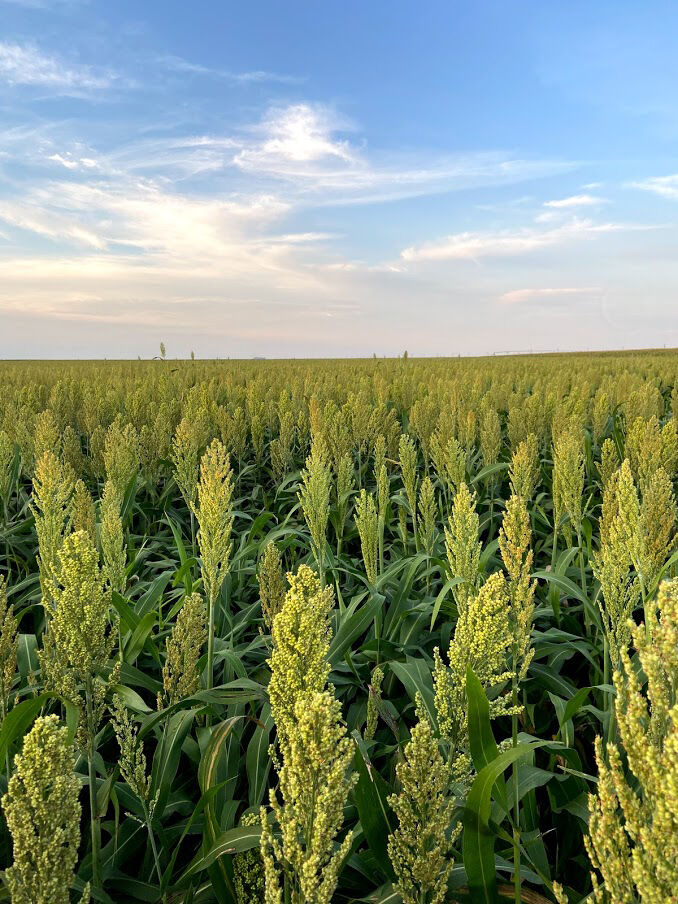Basics for grain sorghum weed control and fertilizer requirements

Longtime growers of grain sorghum realize it is imperative to get pre-emergence herbicide right. Because post-emergence herbicide options are limited, it is better to be certain fields start out clean and conditions are as good as they can be for successful pre-emergence weed control.
The herbicide choices for pre-emergence weed control are confined to mostly six active ingredients, with many growers opting for a combination of atrazine plus one of the group 15 herbicides that include S-metolachlor, acetochlor and dimethenamid. The most common premixes used are:
Bicep II Magnum, Bicep Lite II Magnum, Cinch ATZ, other generics contain atrazine and S-metolachlor, and some generics use metolachlor; Degree Xtra, Fultime NXT that contain atrazine and acetochlor; and Lumax EZ, Lexar EZ that contain a three-way mix of atrazine, S-metolachlor and mesotrione.
The three-way mix in Lumax EZ or Lexar EZ contains not only atrazine and S-metolachlor but a third active ingredient, mesotrione, which improves broadleaf weed control; however, mesotrione can only be used in heavier textured soils or crop injury is likely to occur.
In those soils where atrazine and mesotrione cannot be used, growers are using S-metolachlor sold as Dual, acetochlor sold as Warrant, or dimethenamid sold as Outlook, alone. A final option for these growers is to use Verdict spiked with some additional Outlook. Verdict contains saflufenacil and dimethenamid. The most common rate is 10 ounces of Verdict plus an additional 10 ounces of Outlook.
Grain sorghum is similar to corn in the number of nutrients needed per bushel of grain harvested. To reach a specific yield goal, an adequate supply of nutrients, including nitrogen, phosphorus, potassium and sulfur, are required. There may be a need to adjust soil pH to above 5.8 to ensure adequate availability of nutrients in some soils.
The rule of thumb for sorghum nitrogen requirement is 1.12 pounds of nitrogen per bushel of grain. A 100-bushel yield will need 112 pounds of nitrogen. The amount of nitrogen that is applied should be adjusted for soil residual nitrogen in addition to taking into account soil organic matter. The most efficient way to supply nitrogen is to apply no more than 50% of the nitrogen needed preplant, apply the remaining nitrogen in a starter mix with phosphorus and maybe sulfur with a final application made during the growing season. The in-season application should be made 30 to 45 days after emergence. By splitting the nitrogen fertilizer into multiple applications, the total amount of nitrogen applied can be adjusted to match a changing yield goal based on current and expected environmental conditions—particularly rainfall.
Phosphorus and potassium fertilizer requirements should be based on soil test analysis. If phosphorus is needed, apply in a narrow band a few inches to the side of sorghum rows to improve the plant’s phosphorus utilization. Many soils where sorghum is grown do not require potassium and, if needed, usually in small amounts.
Sulfur is often a neglected nutrient in sorghum but can be an important addition in higher-yielding environments. Growers should strive to keep the nitrogen to sulfur ratio to approximately 15 to 1.
Editor’s note: Brent Bean, Ph.D., Sorghum Checkoff Director of Agronomy, Lubbock, Texas. For more information visit www.sorghumcheckoff.com.

